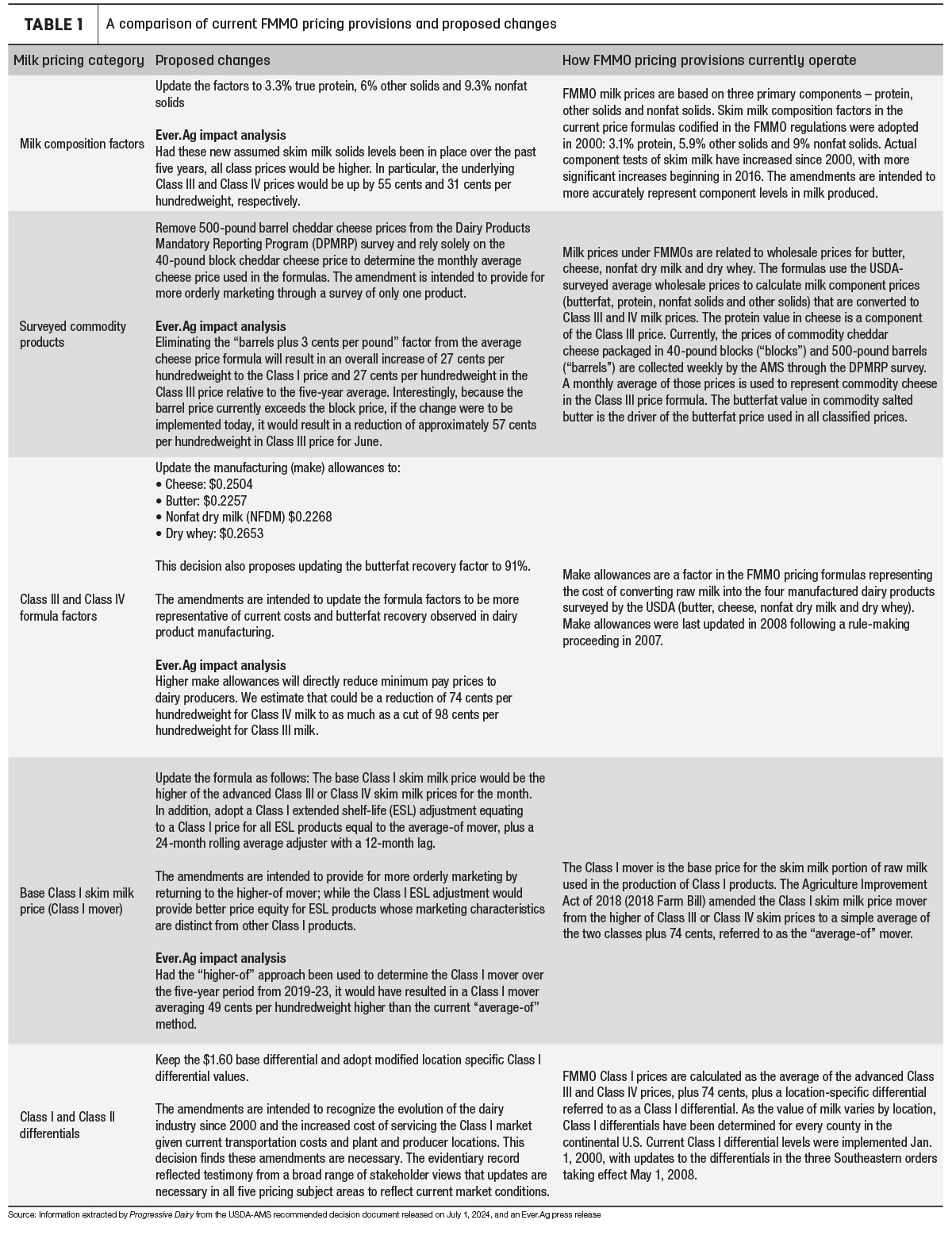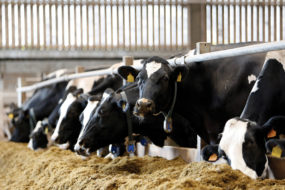On July 1, the USDA Agricultural Marketing Service (AMS) released its recommended decision, which proposes to amend the pricing provisions in the 11 Federal Milk Marketing Orders (FMMOs). This follows the record-breaking 49-day hearing process that began in August 2023 and concluded in late January 2024.
The recommended decision proposes amendments to five categories of milk pricing, including milk composition factors, surveyed commodity products, Class III and Class IV formula factors, base Class I skim milk price, and Class I and Class II differentials with the intention of updating formulas and factors in response to industry changes over time (Table 1).
Many dairy industry organizations released statements this week, most of which saying that they need to dive into the full report in greater detail. However, many like Sarah Sarbacker from FarmFirst agreed that the USDA has “acknowledged what dairy farmers, cooperatives and other stakeholders have been asking them to address.”
“As we move forward, we are optimistic that necessary changes will be made to improve the milk pricing system for dairy producers,” Sarbacker said.
Gregg Doud, president and CEO of National Milk Producers Federation, said in a statement that they are “heartened” that much of what they proposed is reflected in the USDA’s FMMO modernization plan.
“Crafting an effective milk pricing system for farmers is complex and requires a careful balance,” Doud said. “The USDA’s plan acknowledges that complexity and, while not matching our proposal in every detail, looks largely in keeping with the comprehensive approach painstakingly determined by the work of dairy farmers and their cooperatives over the last three years.”
While many are pleased with certain amendments, there are also disappointments for some industry organizations. In an International Dairy Foods Association (IDFA) statement, IDFA Chief Economist Mike Brown expressed their disappointment with the proposed changes to the Class I mover.
“Our first impression is that there are aspects of the proposal that are responsive to the facts and data presented at the hearing by IDFA and our members, which offer a path toward balanced growth across the dairy supply chain,” Brown said. “We were disappointed that the recommended decision would revert the Class I mover to the ‘higher-of,’ which will make it nearly impossible for non-ESL fluid milk processors and their customers to continue to use risk management tools in their business relationships.”
In another statement, Lucas Sjostrom, managing director for Edge Dairy Farmer Cooperative, added that they “anticipate there will be a period of education between the final recommendation and when farmers will need to vote.”
The USDA anticipates the recommended decision will be published in the Federal Register in early July. Written comments must be submitted and filed with the Office of the Hearing Clerk within 60 days after the date of publication in the Federal Register for consideration in the final rule (by mail: U.S. Department of Agriculture, 1400 Independence Ave., SW, Stop 9203, Room 1031, Washington, D.C. 20250-9203; fax: (844) 325-6940; or online. All comments should reference docket number AMS-DA-23-003, along with the date and page number of the Federal Register. After the comment period, the USDA will have 60 days to develop their final rule, which dairy producers will vote on in a referendum.










